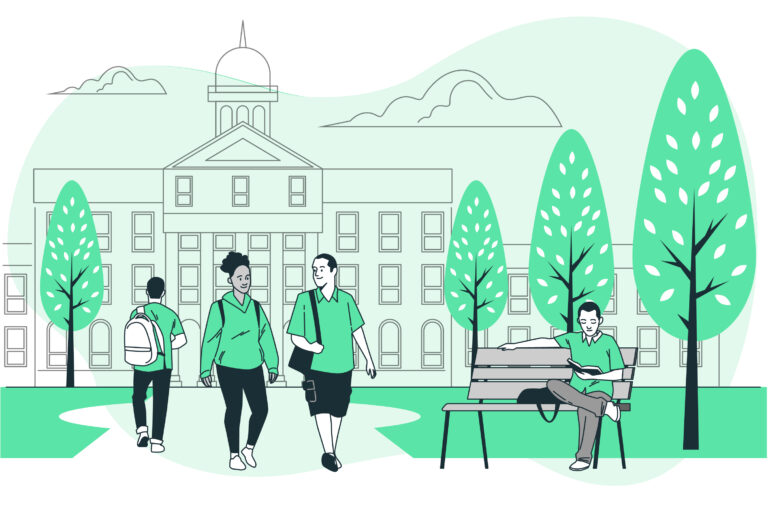When I was teaching user experience to undergraduate students, I asked them to think about three brands they felt connected to and three brands they did not like.
The goal was to discuss what makes brands more favorable than others and connect their perceptions with the overall customer experience these brands offered.
But something unexpected happened.
One of my students mentioned our university as a brand she did not like.
How do your back-end processes affect the student experience?
During our exchange, the student said that while she was more than happy with the university’s academic offering and career preparation, it was highly frustrating that the administrative requests took a long time.
This observation resonated with other students in my class, who agreed with this point: delayed response times are frustrating.
During their time at universities, students submit several administrative requests like housing, financial aid, course enrollment, grade changes, and others. When requests take a long time, the overall student experience is affected, and over time, this poorly influences their engagement. This situation is especially true when a request is needed to proceed with other activities; for instance, a delay in the result of a financial aid request is frustrating as it determines the financial planning for the coming months.
We moved into a valuable discussion about what it means to serve a stellar customer experience in higher ed.
What is the customer experience in higher ed?
In simple terms, customer experience is defined by how well your university can deliver your value proposition. Most students feel the ultimate value proposition of a college or university lies in the caliber of qualifications they receive for future employment opportunities.
But getting there is a long journey. The customer experience starts with marketing initiatives and recruitment. It continues into the application process. Even after you admit a student, the experience continues on, extending into touch points like student services. In each stage, the quality of the interactions influences the customer experience. If you succeed in each step with minimal frustration for your students—success! You’ve delivered an outstanding customer experience.
In the book Basic Principles of Curriculum and Instruction, Tyler recognized the active part of students in the overall process and stated: “It is what he does that he learns, not what the teacher does.” A student’s own engagement plays a relevant role in preparing for future employment opportunities.
In higher ed, keeping students engaged involves years of small processes that build into a positive customer experience. Each process—be it a request to transfer credits or add/drop a course—can boost or weaken the customer experience. Long wait times and frustrating red tape dwindle student engagement.
So how can you build a winning experience time and time again? Any higher ed value proposition requires one key thing: efficient and flexible processes to streamline interpersonal interactions and touch points with students.
How can you use process automation to improve student engagement?
What is interesting to note is that universities have very different time responses for the same request.
Let’s say University A takes an average of 2 days to process a grade change request. University B might process this in an average of 2 weeks—as exposed in this post. The asymmetry between University A and University B raises the question: What is university A doing to have better performance and shorter response times?
- Better process design and exception handling: The first step in process design is to find the “happy path,” where the workflow runs successfully without exceptions.
In other words, there are no missing documents, clear decision-making criteria are defined, and the participants execute their tasks in the right time frame.
But occasionally, there are exceptions, and we must predict them. Missing information, a forgotten reminder, or a miscalculation in how long it takes to complete each step can negatively impact the interaction. We can assume University A has planned ahead to ensure these exceptions do not disrupt turnaround times!
- Uses process automation and technology to streamline its workflows: While paper-based workflows make it difficult to track information and task status, process automation allows for better information tracking and increased transparency into who is doing what and when. However, process automation alone does not guarantee shorter time responses and efficiency—you need to adopt a continuous process improvement mindset.
- Leverages continuous process improvement: University A leverages continuous process improvement. This is an ongoing effort to identify possible bottlenecks, determine repetitive tasks, and break the status quo by finding novel ways to balance compliance requirements and reduce response times.
At the time of my master’s studies, a professor of Quality Management explained to us the importance of continuous process improvement. It’s not only an initiative but a philosophy that guides an authentic search for ways to enhance processes and interactions.
According to this professor, continuous process improvement efforts do not necessarily belong to quality certifications, such as ISO 9001. In other words, organizations do not need quality certifications to improve their processes in efficiency, effectiveness, and flexibility. Over time a continuous improvement philosophy might become more important than any quality certification.
We can use the current technological landscape to foster good interactions beyond the classroom. No student wants to wait two weeks for a response when they can receive the same response in two days or less.
Therefore, timely responses positively affect student engagement, and enthusiastic student engagement can lead to success in life. As education and experience at universities have the potential to transform lives, and thus, it has the power to transform realities. Therefore, optimizing response times to student requests can make a difference.





